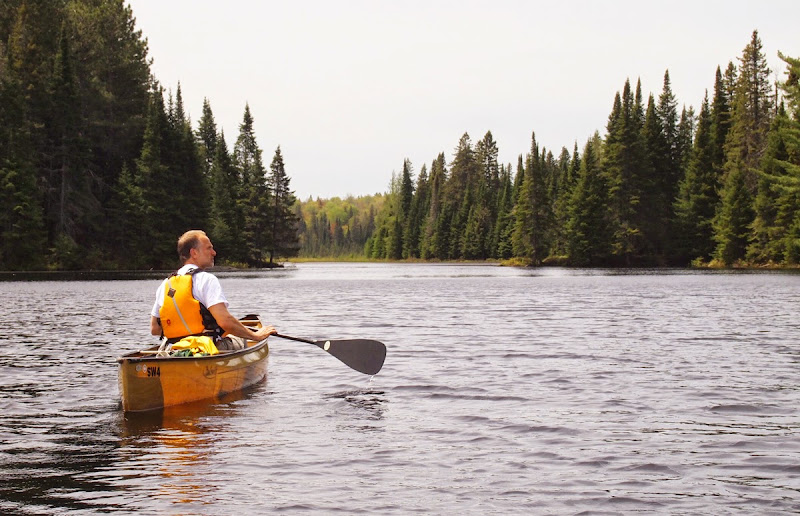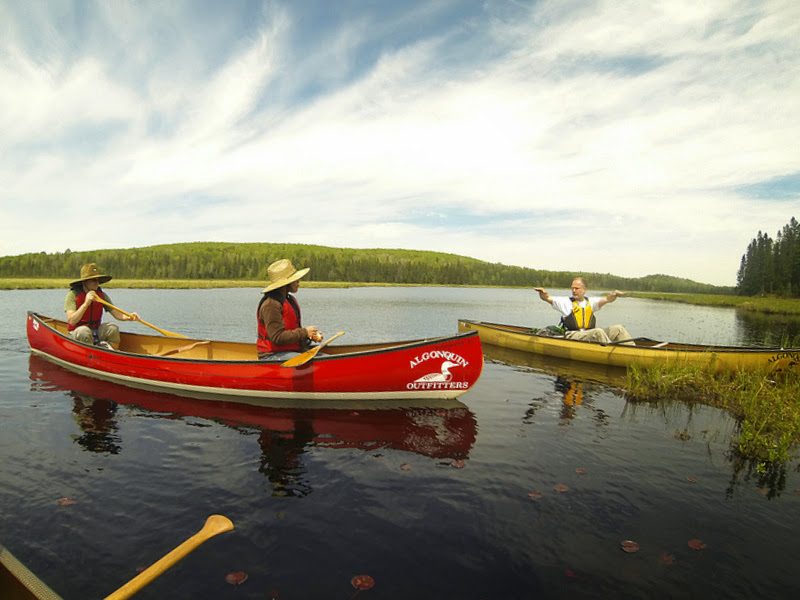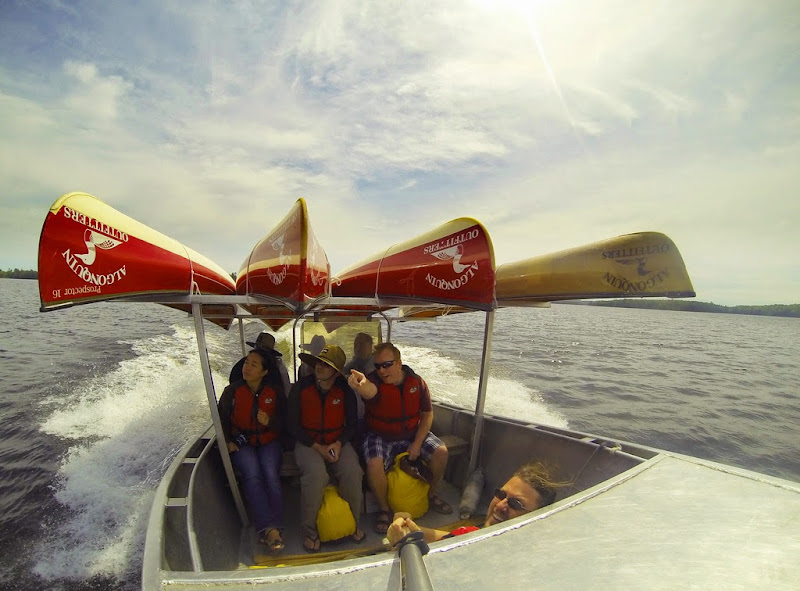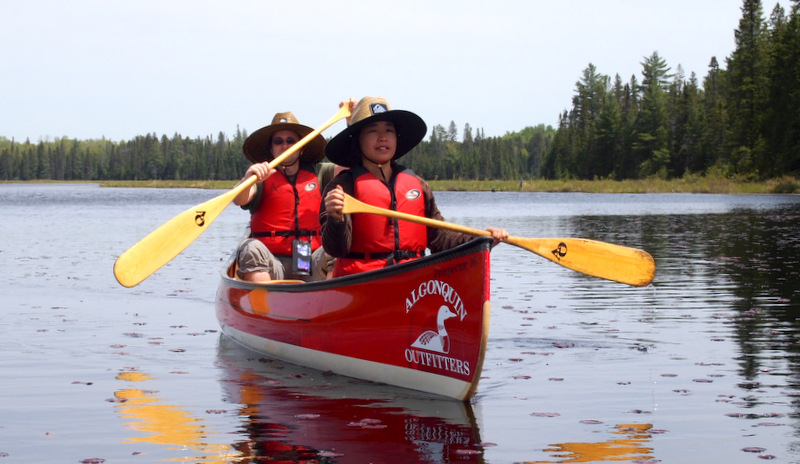Only 2 hours north of Toronto lies Ontario’s most pristine wilderness. I was invited with a few of other travel bloggers to experience ‘a sampler’ of this wilderness. It was a much needed escape from city living.
Ontario, Canada
When I found myself in a canoe, paddling in along in Algonquin Park, one of the Canada’s largest and most well known provincial parks, I couldn’t help but thinking, ‘This is so… Canadian!‘ I’ve always associated ‘Canada’ with ‘canoe’ (along with moose, beavers, maple leaves, and universal health care).
Aaron and I on a canoe
Algonquin Provincial Park is just a couple of hours’ drive from Torono and Ottawa. The wilderness heart of this 3000 sq-mile park is accessible only by foot or by canoe. Algonquin Park is truly a haven for those looking to get away from it all. It is possible to spend days out there without seeing other people.
In a way, you can say that Algonquin Park is made for canoeists with maps clearly marked with canoe routes, designated campground and portages.

A quiet way to explore the wilderness
A canoe glides noiselessly across the mirror-like watery surface
The silence is broken only by the wind rustling among the reeds and the ocassional squawk of birds or loons.
In my case, the silence is broken by Aaron and I arguing.
My friend Aaron and I shared a canoe and we were having problem making it go the way we wanted to. With the wind and the current, we zig zagged our way along Hailstorm Creek, getting stranded at every single clump of floating island we encounter.
“Aaron!” – I hissed. “We need to go right. Right, Aaron!” apparently he couldn’t see the clump of mud straight ahead that I’m trying to avoid.
I heard the clang of his paddle against the canoe.
“Ssssh! – I hissed again. “You’ll scare away the moose!”
I heard him hiss back, “I’m trying, Jill! Stop sushing me!”
I felt a thud as we ran the canoe straight onto the mud island.
“S*it! Not again!”
The hardest thing about canoeing, I learned, is going in a straight line.

Jerry, our guide from Algonquin Outfitters
This is Jerry, our guide telling us, “You are supposed to go around the floating island. Not into it.”
(No, just kidding. He could’ve. But he was too nice. He was actually telling us how in a few short weeks, the whole river will be lined with flowering water lilies and how pretty it would be.)
I wonder if all of the banging and the yelling was what scared away the moose that supposedly frequent the area.
Your chance of seeing a moose is highest in Algonquin Park than anywhere else in Canada. On the way to the lake, we saw 11! So I wasn’t too upset that we didn’t see any on our canoe trip. Instead I simply enjoyed the sensation of gliding across the surface of the water.
There’s something therapeutic, almost meditative really about canoeing. It’s the lack of noise I think. If done right (aka, not what we were doing) canoes can be eerily quiet on the water.
Algonquin Park: A water wonderland
So many places to go, so little time
In Algonquin, the option for multiday canoeing trip is virtually limitless. When I was shown the map of the area, I couldn’t stop gawking. Hundreds of navigable lakes and rivers form a 1,200 mi long interconnected system of canoe routes. So many endless possibilities, so little time.

You can take a water taxi to your starting point.
At the end of the day, Aaron and I made it back to the water taxi without further complications (yay!). As bonus points we spotted a couple of loons, a bald eagle, and a strange island that has been over taken by cormorants.
Strange because all of the trees on the island have been killed off by the acidic waste of the cormorants.

The cormorants have killed off the trees on this island
I’d love to give multi-day canoe trip a try someday, maybe during the Fall when the maple leaves turn into this crazy display of orange and red against the blue color of the lake and the sky.
And hopefully with less cursing and less zig zagging.
Have you ever gone canoeing before? Would you go out in the wilderness for days on a canoe?
Info on Algonquin Park
Hailstorm Creek can be reached from Lake Opeongo, the largest lake in Algonquin Park. The staff from Algonquin Outfitters by the lake can help with rentals, water taxi, and logistic planning.
Water taxi rate starts from $25/per person.
This trip is hosted by Explorer’s Edge


